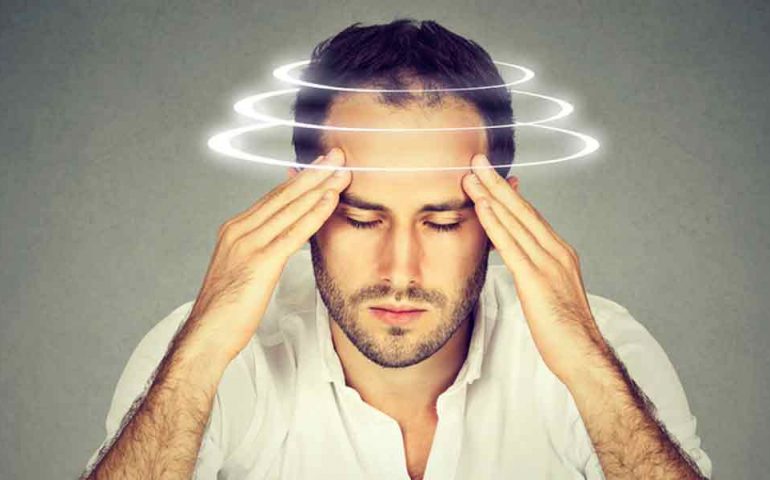
Vertigo (Dizziness)
Central and Peripheral Vertigo: Types, Subtypes, and Treatment Approaches
Vertigo is a balance disorder that gives an individual a sensation of their surroundings spinning or moving. This condition can arise due to various reasons and significantly impact one’s quality of life. Central vertigo and peripheral vertigo are the two main classifications, stemming from distinct origins. In this article, under the guidance of Neurology Specialist Dr. Mustafa Zafer Demirtaş, focusing on cases of Alanya vertigo, we will delve into the types, subtypes, and treatment approaches for both central and peripheral vertigo.
Central Vertigo
Central vertigo is caused by issues within the central nervous system, such as the brain or cerebellum. For instance, conditions like migraines, brain tumors, or multiple sclerosis can be among the causes of central vertigo. Central vertigo usually starts suddenly, provides a sensation of objects around moving, and can induce nausea.
Subtypes and Treatment Approaches
- Migraine-Associated Central Vertigo: Migraines can also lead to dizziness alongside headaches. Treatment is generally directed in line with migraine therapies. Medications, trigger prevention, and lifestyle changes constitute the fundamental approach to treatment.
- Brain Tumors: Treatment can involve surgery, radiation therapy, or chemotherapy, depending on the tumor type and location. The treatment approach is shaped by factors like tumor size, the patient’s overall health, and other considerations.
Peripheral Vertigo
Peripheral vertigo originates from problems within the inner ear or balance system. This type of vertigo is often triggered by head movements and can hinder a person’s ability to move around. Vestibular neuritis, Meniere’s disease, and benign paroxysmal positional vertigo (BPPV) are examples of subtypes of peripheral vertigo.
Subtypes and Treatment Approaches
- Benign Paroxysmal Positional Vertigo (BPPV): This is the most common subtype of peripheral vertigo. It is triggered by sudden changes in head position. Treatment aims to alleviate vertigo through physical maneuvers like the Epley maneuver.
- Meniere’s Disease: This condition arises due to fluid accumulation in the inner ear. Treatment may involve restricting salt intake, medications, and in some cases, surgical intervention.
Conclusion
Central and peripheral vertigo are two main types of balance disorders, stemming from different causes and mechanisms. Both types of vertigo can impact a patient’s quality of life and should be managed with appropriate treatment approaches. Under the guidance of Dr. Mustafa Zafer Demirtaş, a neurology specialist in Alanya, vertigo cases should be evaluated through a multidisciplinary approach, offering patients the most suitable treatment methods.
Question 1: What is vertigo?
Answer: Vertigo is a type of balance disorder that makes an individual feel as though they or their surroundings are spinning.
Question 2: What is central vertigo?
Answer: Central vertigo is a type of vertigo caused by problems originating in the central nervous system, such as the brain or cerebellum.
Question 3: What is peripheral vertigo?
Answer: Peripheral vertigo is a type of vertigo caused by issues related to the inner ear or the balance system.
Question 4: What is Benign Paroxysmal Positional Vertigo (BPPV)?
Answer: BPPV is a subtype of peripheral vertigo that is triggered by sudden changes in head position, resulting from the displacement of inner ear crystals.
Question 5: What is Meniere’s disease?
Answer: Meniere’s disease is a subtype of peripheral vertigo characterized by symptoms like dizziness, hearing loss, and tinnitus, caused by the accumulation of fluid in the inner ear.
Question 6: What factors can increase the risk of central vertigo?
Answer: Conditions like migraines, brain tumors, or multiple sclerosis can increase the risk of central vertigo.
Question 7: How is peripheral vertigo treated?
Answer: Treatment for peripheral vertigo depends on the underlying causes. Options include physical maneuvers, medications, and surgery.
Question 8: Which conditions can lead to central vertigo?
Answer: Central vertigo can be associated with various conditions such as migraines, brain tumors, strokes, or brain infections.
Question 9: How is vertigo diagnosed?
Answer: Vertigo diagnosis involves evaluating the patient’s symptoms and medical history, conducting a physical examination, and, in some cases, utilizing imaging tests.
Question 10: How is central vertigo treated?
Answer: Treatment for central vertigo varies based on the underlying causes. Migraine-specific treatments, surgery, or radiation therapy might be considered for different cases.




